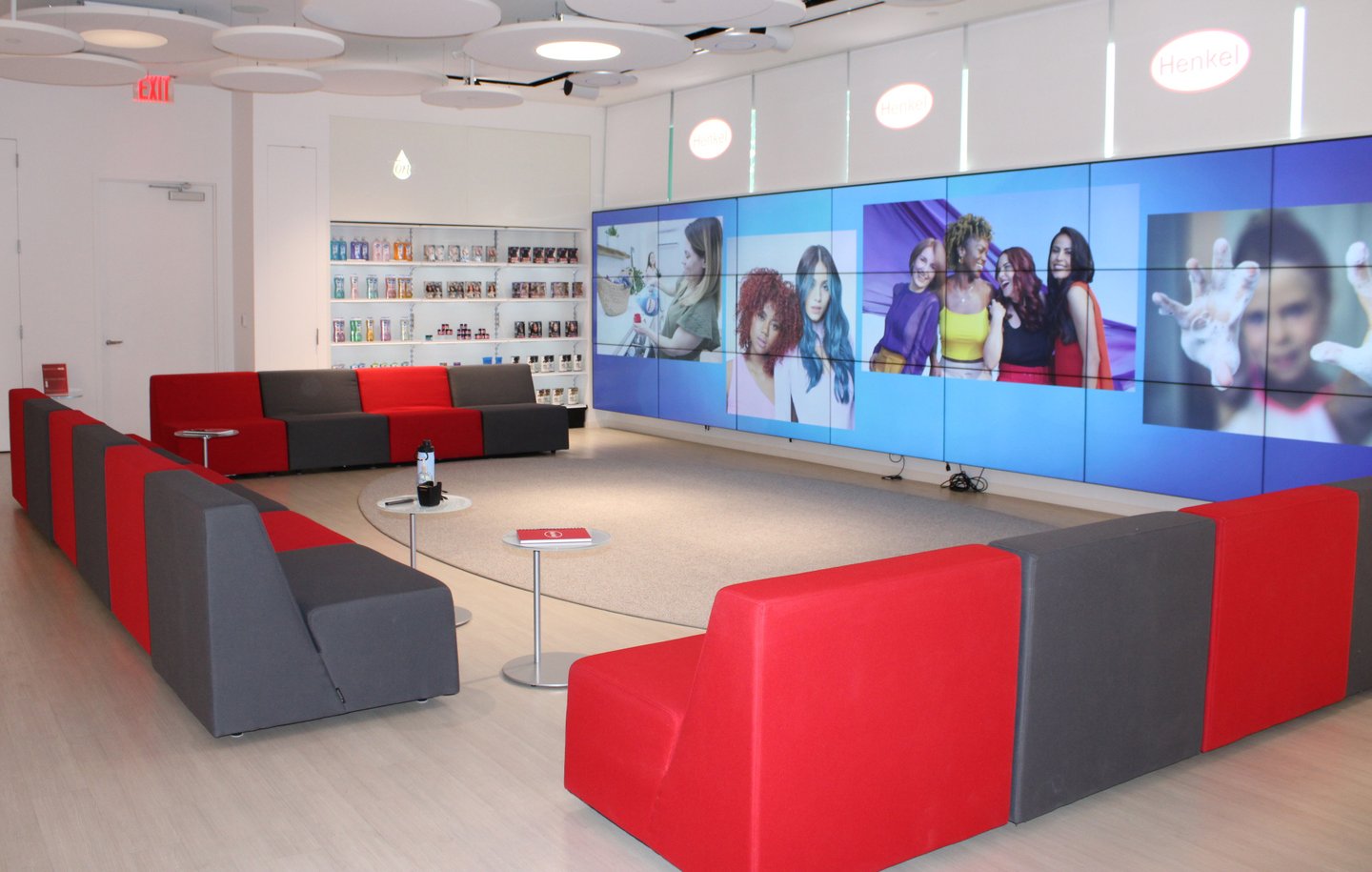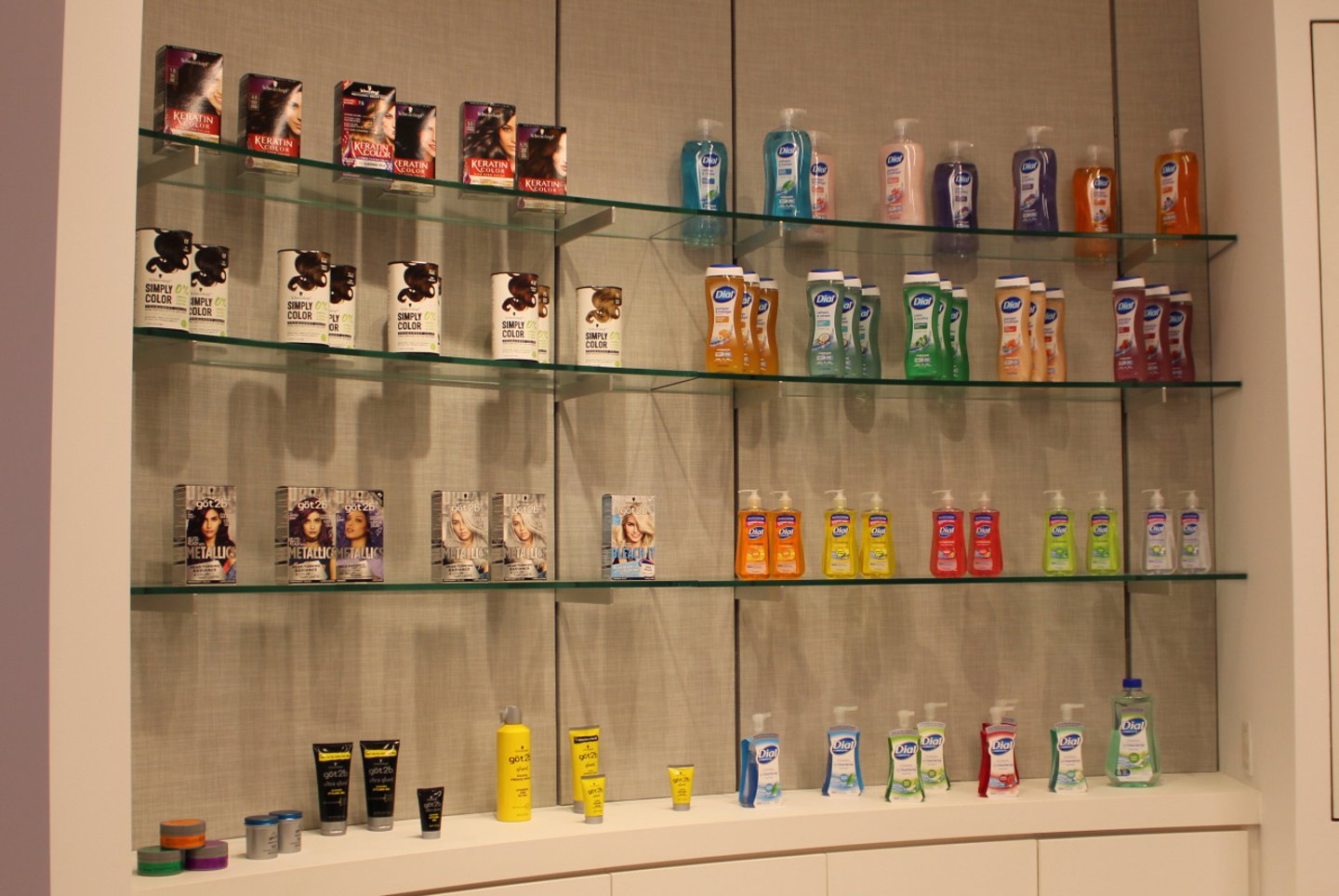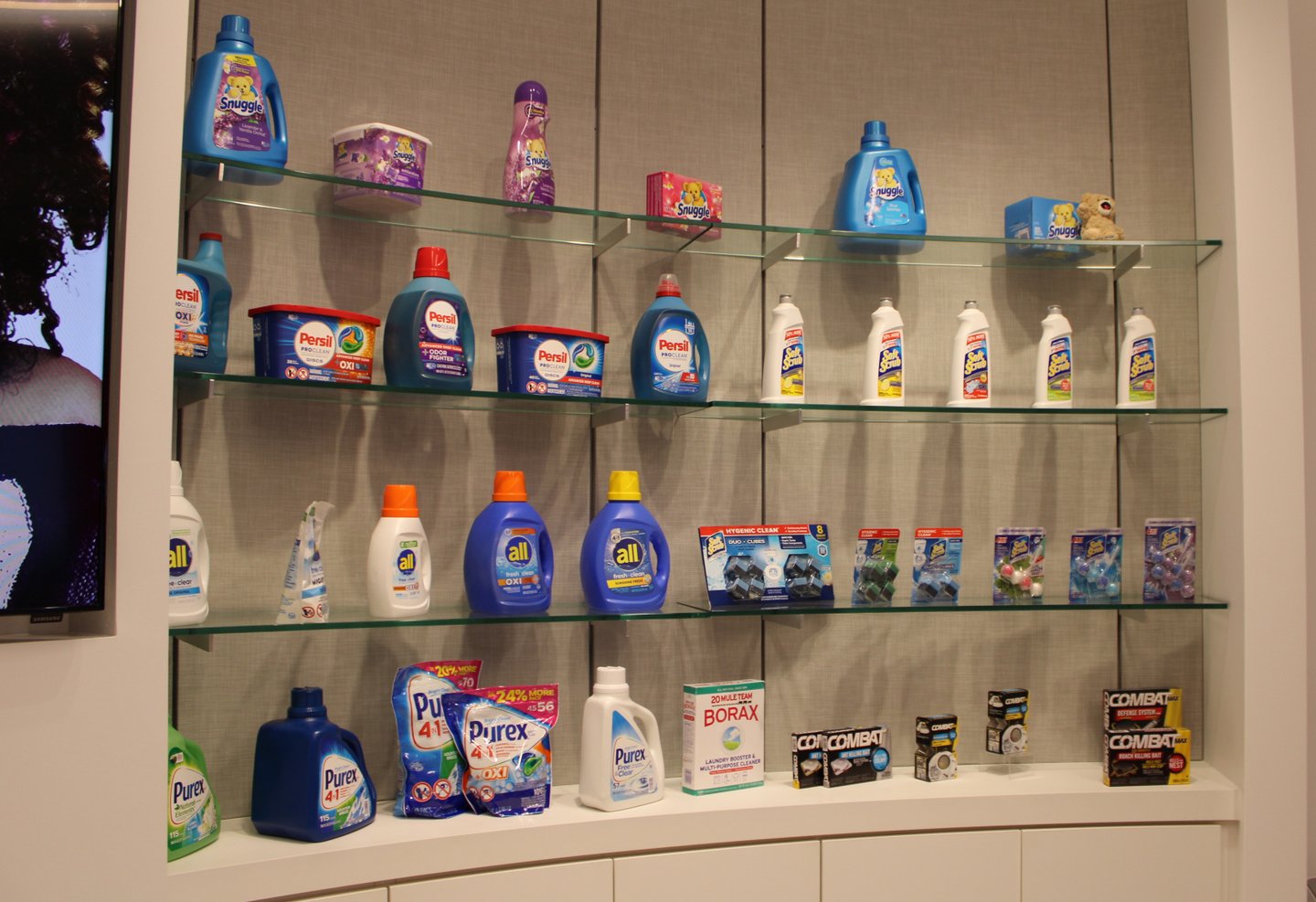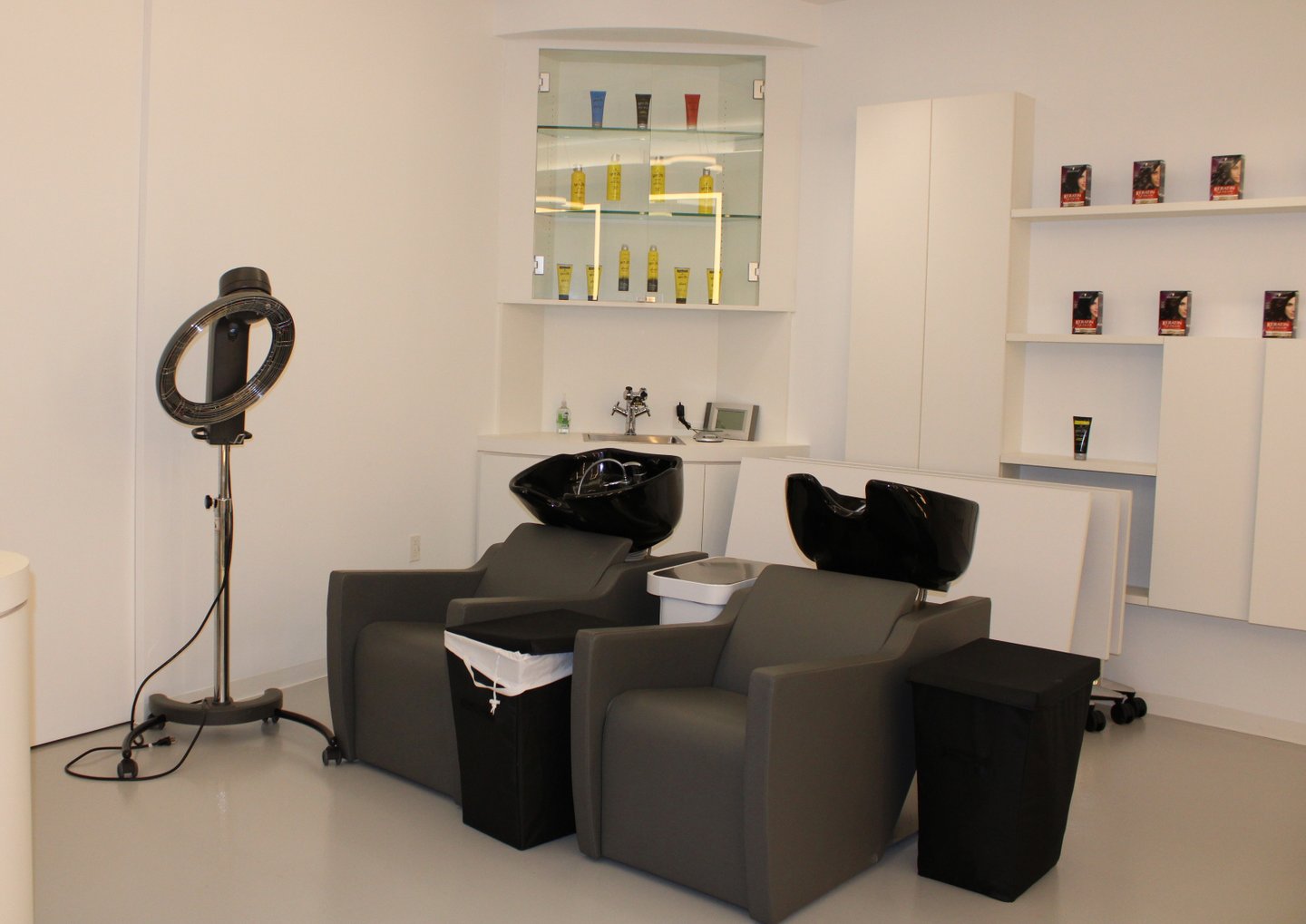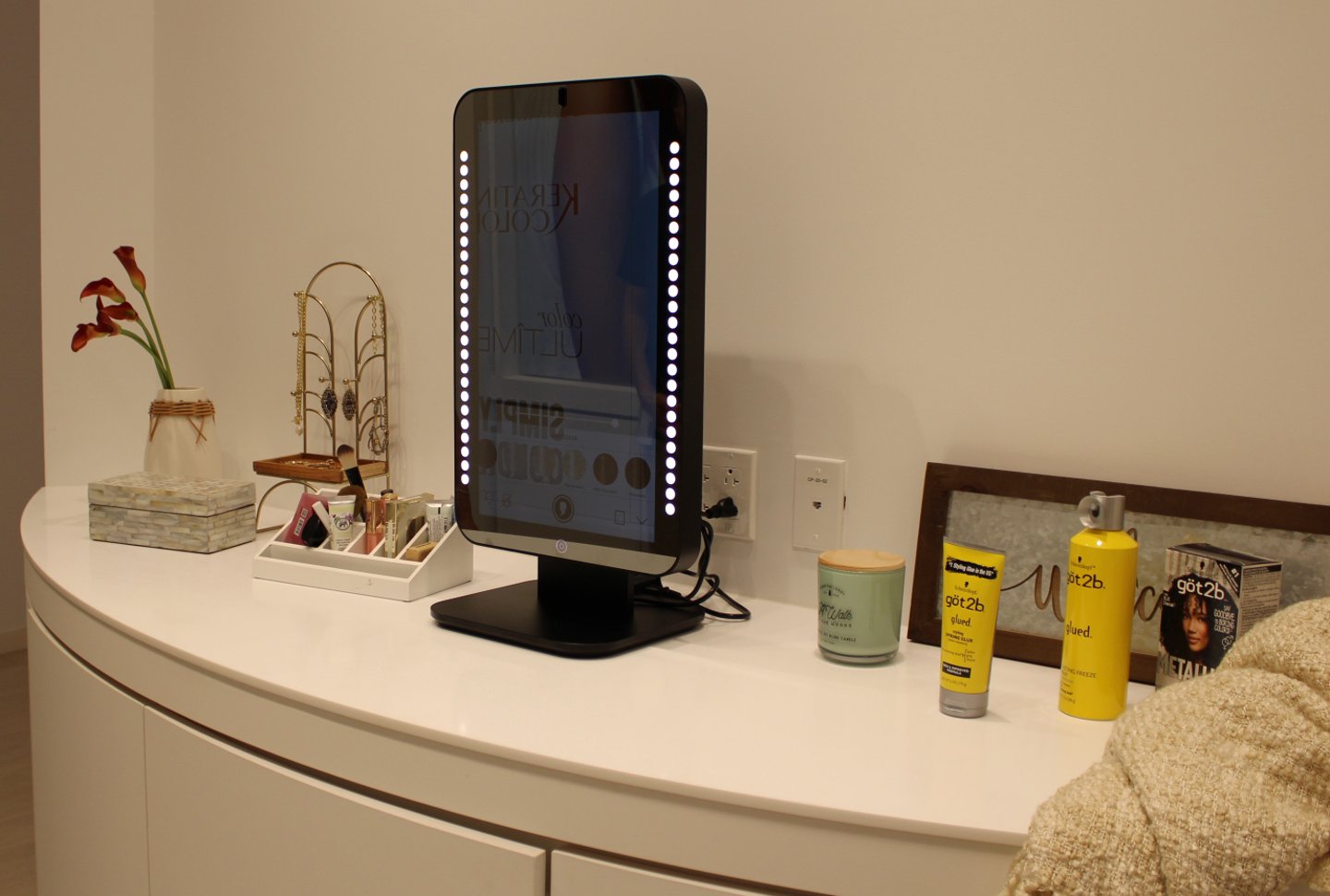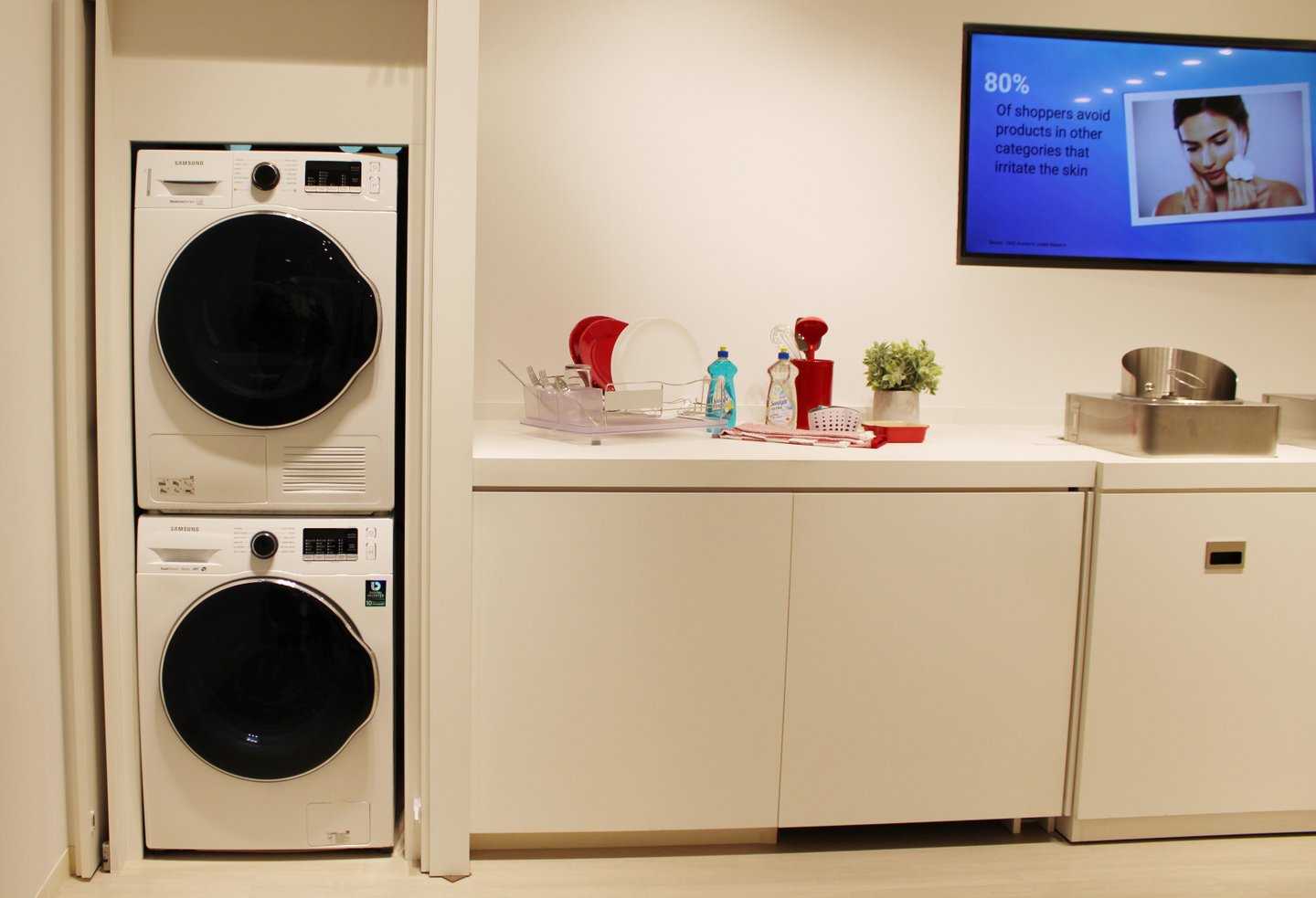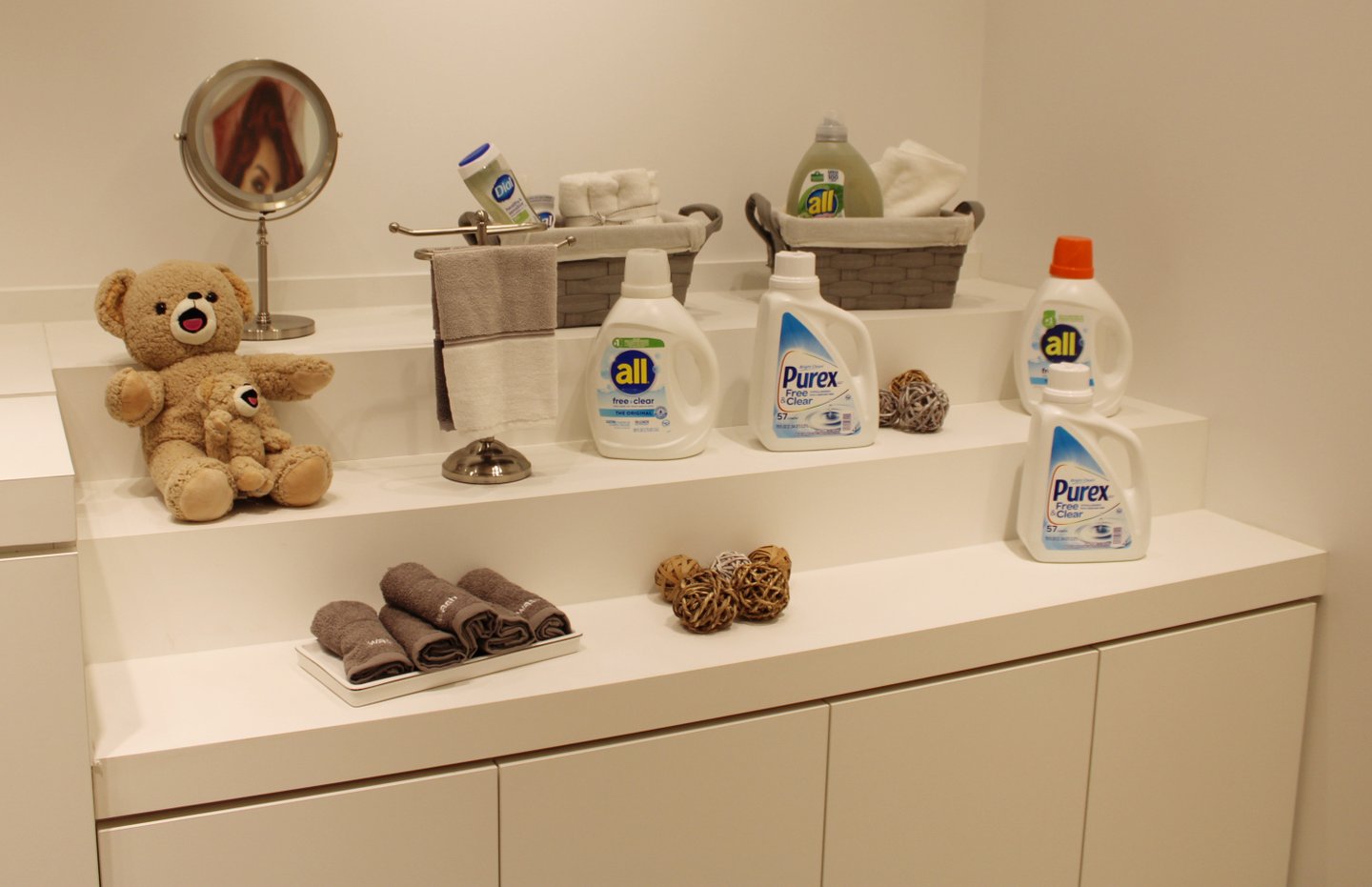The Pursuit Of Personalized Insights: Inside Henkel’s Experience Center
Henkel’s North American Experience Center is proving to be an innovation nexus for the consumer goods company as it evolves into its new corporate structure.
Located in Stamford, CT, the Henkel Experience Center (HEC) serves as an interactive platform for myriad functions and stakeholders in the global company, and it’s become an integral part of its growth mission. A recent visit by CGT found a vibrant, tech-infused collaboration space primed for customized experiences.
Henkel, which counts more than 50,000 employees among its ranks, has both a Global Experience Center and Lighthouse in Dusseldorf, Germany, and the U.S. HEC, which opened in 2019, is modeled after these platforms. (It’s worth noting that it opened prior to the consolidation of Henkel’s home care, laundry, and beauty divisions last year, which resulted in the forming of Henkel Consumer Brands. As a result, the HEC marked the first facility to house the company’s laundry and beauty businesses under one roof — no small feat for the massive global org.)
Consequently, the interactive space is only growing in value as Henkel evolves to meet the needs of its retail partners and consumers, according to interviews with Carolina Betancourt, senior manager of the HEC North America, and Jeff Bankers, R&D director of body and home care.
The ultimate objective of the HEC is to accelerate Henkel’s strategic agenda through joint value creation, Betancourt says. North America is one of Henkel’s largest region and comes with its own nuances; while a great deal of sharing occurs between the two experience centers, regionalizing these learnings has been important.
“It's completely different from other global markets, so we leverage the learnings, the R&D, the developments from Global [HEC], but we adapt that to our customers — which, for us, is critical,” she says.
HEC Purpose
One part storytelling facility, one part educational platform, the HEC is a busy place donning many Henkel hats. The company uses it for everything from joint business and media planning sessions with its retail customers, to R&D testing for new products, to product launch events.
In addition to onboarding sessions for new buyers and/or within new categories, Henkel stages its corporate “HCB University” program to provide hands-on educational experiences for both customers and colleagues.
- See also: Henkel's Dean General on Prioritizing IT Innovation Investments and a Digitally-Powered Supply Chain
“We have an internal program [for] when we have a new class of sales or marketing folks come in, and they need to understand the technology and the insights for why we sell our products,” says Bankers.
When a new buyer comes on, meanwhile, “it’s also important for us to help that buyer understand the people who come to their shelves. We have people with years, if not decades, of experience on who their buyer is, what their consumer needs are, [and] what their biggest unmet needs are,” he notes.
And while the HEC isn’t the only Henkel test-and-learn environment, it’s among the most valuable because of its friendliness for harnessing and conveying both retailer and consumer feedback. As packaging and product prototypes are demonstrated to customers and consumers, their resulting feedback not only shapes innovation in the pipeline and on the shelf, but the insights also serve as valuable resources for Henkel to share with its retail partners.
Storytelling Engine
Henkel taps into a wide range of tools and technologies in the HEC to maximize storytelling impact and learn more about its products.
Some tools are more technical than others. For example, a thermal desorption machine demonstrates what’s among one of the most critical takeaways of a new product: fragrance. Both the intensity and character of a scent can compete against each other, and the machine enables Henkel to release a range of intensities for a more accurate understanding of someone’s reaction.
It’s an experiential approach that takes something with a very technical foundation and turns it into an engaging experience for retailers that focuses on consumer needs to drive education of the product, says Bankers.
- See also: How Henkel Is Streamlining IT Support
“When you smell a fragrance, it's so dependent upon the situation you're in, both in terms of the temperature outside with the humidity, etc.,” he says. “This tries to make all things equivalent.”
A scanning electron microscope (SEM) in turn lets the R&D team demonstrate, at extremely granular levels, how color-treated hair can be repaired using Henkel products, with similar equipment demonstrating the effect on laundry and skincare.
A Glo Germ demo — conducted for CGT during the visit — leverages UV reflective particles to demonstrate the impact of foam hand soap, while a facility-roaming telepresence robot supplies a more engaging and interactive experience for remote participants.
Augmented and virtual reality are employed through a demo station that vividly tests and showcases such product attributes as hair color, while a fully operational beauty and hair salon is used for hands-on testing, demos, and styling. (Henkel employees have also been known to dip in for their own hair cuts, time permitting.)
On the less-technical but equally influential side: Water guns are often distributed to buyers to showcase enzymatic reactions within stain-removal products, while the laundry facility stations are used to create vignettes to further drive the story home.
The HEC has even been leveraged to launch products; for example, a recent media launch for hand soap was accompanied by an Instagram Live event to engage consumers.
Hybrid Interactivity
While we may have moved away from many remote experiences during the pandemic, that doesn’t mean they’ve lost all value. Henkel attempted to recreate many of these interactive capabilities from home during the pandemic, with some even recreating almost “mini HECs” in their homes, says Bankers.
Small details — such as tiny bubbles lazing in dish soap — can have a big impact, but those kinds of experiences are among the hardest to replicate remotely. In order to drive more effective experiences, Henkel installed cameras with powerful zoom lenses above some of its testing areas to provide customers with up-close-and-personal views.
They also began sending their customers experience kits so that customers could follow along with the demos at home. Not all experiences translate virtually, notes Bankers. Some attributes — such as those important fragrances — may be environmentally dependent, but they remain the first point of contact for consumers with many brands. These kits let the Henkel team receive the real-time feedback that’s critical in product innovation, with their expressions then transmitted to large, multi-screen displays to forge more connectivity with participants.
Many of these practices continue today. While the HEC is fully back in person, some customers, whether because of convenience or scheduling, prefer to engage remotely, and so this has enabled Henkel to up its game. Looking ahead, the company expects further value to be unlocked.
“We’re always thinking about what we can do next, how we can change, how we can make every meeting more interactive,” says Betancourt. “Because every meeting is customized, each one is different from another.”



